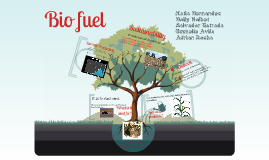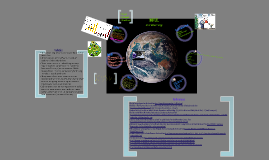Biofuel
Transcript: BIOFUEL Biogas Biodiesel Bioethanol Many diesel engines are able to use %100 biofuel hassle free. Others may be better off with a blend of biodiesel and standard diesel Vehicles with certain kinds of engines may require biodiesel conversion kits in order to function efficiently. (varies between $1000-$2000) These kits are also necessary for driving in especially cold conditions. Many newer diesel vehicles warranties will become void with the use of biofuel,due to newer vehicles using engines with higher pressure engines which can cause problems. Due to some areas not having consistent biofuel suppliers, some people have made their own biofuel conversion tanks, using vegetable grease from restaurants. (transesterfication) 1900's Leader in ethanol production In 2007 Brazil produced 32% of the worlds ethanol. US is a large importer - 1.7 million tons in 2006 2/3 from Brazil 1979 dedicated ethanol vehicles -“Did you know? The less oil the United States imports, the less we have to worry about the stability of the countries that supplies that oil. The production of nearly 6.8 billion gallons of ethanol means that the U.S. needed to import 228.8 million fewer barrels of oil in 2007 to manufacture gasoline, or roughly the equivalent of five percent of total U.S. crude oil imports. By choosing ethanol, you can make a difference for our economy.” Biofuel Energy Corp Pioneer Trail, in Wood River, Nebraska. Buffalo Lake, in Fairmont, Minnesota -has 2 plants in USA. Both use existing Cargill facilities. -115 Million gallons per year Wartsila Liquid Biofuel Plants Finnish company active in over 70 countries -uses oil palm, rapeseed, soy, sunflower and jatropha -oils or fats from fish, poultry, and rendering processes – byproducts of food industry that would be waste – also used -Wärtsilä uses straight vegetable oils. No energy consumption for refinement needed. Oils extracted with simple methods so even CO2 emissions associated with fuel production are minimized -Use highly efficient combustion diesel engines to turn straight vegetable oils or animal fats into electricity and heat -Power plants in range of 1-500 MW using Wartsila 20, 32, and 46 prime movers (graph on website) Proposed plant in UK Torino italy Milltown Indiana Price increase Depletion of food supply Land use Less available products such as palm oil many life-cycle analyses have proven it to reduce greenhouse gas emissions by 75-85 percent creates jobs uses waste accessible to many renewable potential to be inexpensive Fossil fuels are used extensively in the production of biofuel Land use Food versus food Deforestation Price increases Biofuel Energy Corporation. Retrieved from http://www.bfenergy.com/our_facilities.html BIOFUELS - Why They Are Critical to the World of Food [PDF document]. Retrieved from Alberta Biodiesel Association. http://www.albertabiodiesel.org/?i=bd_fvf.Cassman, K. G., & Liska, A. J. (2007). Food and fuel for all: realistic or foolish?. Biofuels, Bioproducts and Biorefining, 1(1), 18-21. doi:10.1002/bbb.3.Lula da Silva, L. I. (2008, January 04). Biofuels Are No Villain. UN Chronicle. Retrieved 2012, October 29. Retrieved from http://www.un.org/wcm/content/site/chronicle/cache/bypass/home/archive/issues2008/pid/21604?pagination=true&ctnscroll_articleContainerList=1_0&ctnlistpagination_articleContainerList=true Expetro. (2008). Brazil’s biofuel industry: outlook for a global leader. Retrieved November 6, 2012, from http://www.chemsystems.com/reports/search/docs/prospectus/mc07_brazil_biofuels_pros.pdf Meinhold, B. (2009). New Biomass for the UK Looks Like a Giant Green Volcano. Inhabitat: Design Will Save the World. Retrieved from http://inhabitat.com/new-biomass-plant-for-the-uk-looks-like-a-giant-green-volcano/ Milltown Biomass-to-Energy Power Station. Wikipedia: The Free Encyclopedia. Retrieved from http://en.wikipedia.org/wiki/Milltown_Biomass-to-Energy_Power_Station Piemonte Agency: Invest in Torino Piemonte. Retrieved from http://www.centroestero.org/repository/14_11_2011_10_47_alternative-and-renewable-energy-in-torino-piemonte.pdf Wärtsilä. Retrieved from http://www.wartsila.com/en/power-plants/smart-power-generation/liquid-biofuel-power-plants http://thepurporters.wordpress.com/2011/04/25/breaking-even-the-best-we-can-do-with-liquid-biofuels/ http://thepurporters.wordpress.com/2011/04/25/breaking-even-the-best-we-can-do-with-liquid-biofuels/ http://www.asiantrendsmonitoring.com/2011/08/10/in-the-food-versus-fuel-debate-is-vegetarianism-the-way-to-go/ http://www.home-made-biodiesel.com/biodiesel-conversion-kits.html Vehicles Fuel made from plant biomass (cellulose), vegetable oil or waste materials. Brazil Ethanol, a type of biofuel that is currently blended with gas from fossil fuels. Italy References Food versus Fuel Define Highly controversial Biofuel is considered carbon neutral, as the biomass absorbs roughly the same amount of carbon dioxide during growth, as when burnt. Alternative Energy

















